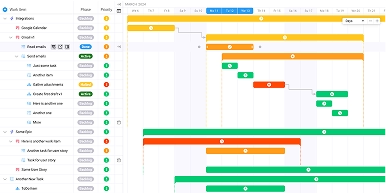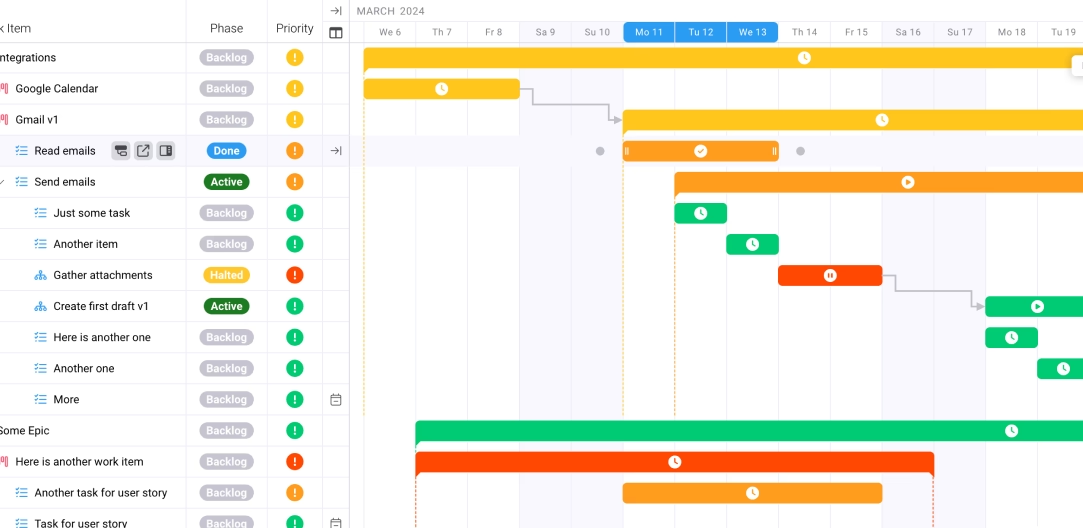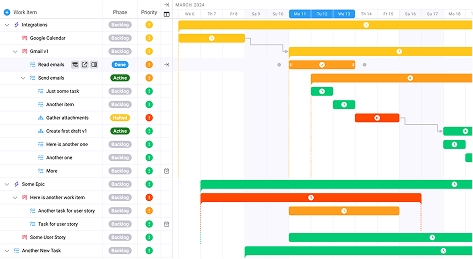
Essential Remote Work IT Solutions for Modern Service Providers
Key takeaways:
- Security Foundation: Implementing zero-trust architecture and comprehensive cybersecurity measures reduces remote work breach risks by over $170,000 per incident
- Infrastructure Investment: Cloud-based solutions and proper networking infrastructure are crucial for 84% of effective remote work environments
- Market Opportunity: The managed services market is projected to reach $731 billion by 2030, driven largely by remote work infrastructure needs
- Strategic Integration: Successful remote work IT solutions require coordinated deployment of VPN services, cloud platforms, communication tools, and security monitoring systems
4 in 10 jobs allow some amount of remote work in 2025, yet most IT service providers are scrambling to secure the infrastructure supporting this distributed workforce. While business leaders celebrate flexibility and cost savings, a concerning reality emerges: 67% of companies have experienced cyberattacks since transitioning to remote work. For modern service providers supporting remote work IT solutions, this represents both an unprecedented opportunity and a critical challenge that demands immediate strategic attention.
The Current Challenge – What’s Broken in Remote Work IT Infrastructure
The rapid shift to remote work exposed fundamental weaknesses in traditional IT approaches. Remote work factors increase data breach costs by $173,074 on average, highlighting how unprepared organizations remain for distributed workforce security challenges. The primary issue isn’t technology availability—it’s the lack of integrated, enterprise-grade solutions designed specifically for remote work environments.
Most businesses still rely on patchwork solutions: consumer-grade video conferencing, basic VPN connections, and inadequate endpoint security. This fragmented approach creates visibility gaps, security vulnerabilities, and performance bottlenecks that compromise both productivity and data protection. 80% of organizations report widening visibility gaps across their cloud operations, making it nearly impossible to maintain consistent security posture across distributed teams.
The challenge extends beyond technology to operational complexity. IT teams struggle to manage diverse device types, multiple connection points, and varying security compliance requirements across remote workers. Traditional reactive IT support models prove insufficient when employees need immediate assistance from different time zones and locations.
Furthermore, the skills gap compounds these challenges. Organizations need specialized expertise in cloud security, remote access technologies, and distributed system management—capabilities that internal IT teams often lack. This reality drives the growing demand for managed service providers who can deliver comprehensive remote work solutions.
The Strategic Framework – Zero-Trust Remote Work Architecture
Successful remote work IT solutions require a fundamental shift from perimeter-based security to zero-trust architecture. This approach assumes no user or device is trustworthy by default, requiring continuous verification for every access request. The framework encompasses four critical pillars: secure connectivity, cloud-first infrastructure, endpoint protection, and continuous monitoring.
Secure Connectivity Foundation
The foundation begins with enterprise-grade VPN solutions and secure access service edge (SASE) technologies. 46 percent of people now use a VPN, representing over 100 million American adults, but consumer VPN services lack the security controls and management capabilities needed for business environments. Organizations need site-to-site VPN connections, split tunneling capabilities, and integrated threat detection to maintain secure connectivity without compromising performance.
Cloud-First Infrastructure Strategy
Modern remote work demands cloud-native solutions that scale dynamically with workforce needs. This includes migrating email systems, file storage, and business applications to cloud platforms that offer built-in security, automatic updates, and global accessibility. The key lies in selecting platforms that integrate seamlessly while maintaining centralized management and security controls.
Comprehensive Endpoint Protection
Every remote device becomes a potential entry point for cyber threats. Endpoint detection and response (EDR) solutions, device encryption, and mobile device management (MDM) platforms ensure consistent security policies across all devices. This protection must extend to personal devices used for work through bring-your-own-device (BYOD) policies.
Continuous Monitoring and Response
Real-time monitoring capabilities provide visibility into network traffic, user behavior, and security incidents across distributed environments. Security information and event management (SIEM) platforms aggregate logs and alerts from multiple sources, enabling rapid threat detection and response regardless of user location.
Implementation Tactics – 5 Essential Remote Work IT Solutions
1. Enterprise VPN and Secure Access Solutions
Implementing robust VPN infrastructure represents the cornerstone of remote work security. Organizations need solutions that go beyond basic tunneling to include features like multi-factor authentication, conditional access policies, and integration with identity management systems. Modern SASE platforms combine VPN functionality with cloud security, providing a single solution for secure access and threat protection.
Key implementation considerations include bandwidth allocation, server redundancy, and geographic distribution to ensure consistent performance for global teams. Split tunneling configurations allow users to access local resources directly while routing business traffic through secure channels. This approach optimizes performance while maintaining security for sensitive data and applications.
2. Cloud-Based Communication and Collaboration Platforms
84% of survey respondents said proper networking infrastructure is crucial for effective remote working, making reliable communication platforms essential. Enterprise communication solutions must integrate voice, video, messaging, and file sharing in unified platforms that support both scheduled meetings and ad-hoc collaboration.
The selection process should prioritize platforms offering end-to-end encryption, administrative controls, and integration capabilities with existing business systems. Features like recording management, waiting room controls, and participant permissions ensure professional meeting experiences while maintaining security compliance. Cloud storage integration allows seamless document collaboration without compromising version control or access security.
3. Comprehensive Endpoint Security Management
Remote endpoints require protection that extends far beyond traditional antivirus software. Modern endpoint security platforms combine threat detection, device encryption, application control, and vulnerability management in integrated solutions. These platforms must operate effectively regardless of network connection, providing protection when devices connect to public wifi or work offline.
Device management capabilities ensure consistent security policies across diverse hardware and operating systems. Remote wipe capabilities, software deployment, and compliance monitoring become critical when IT teams cannot physically access devices. Essential IT service management best practices for operational excellence include automated patch management and security monitoring that reduces manual intervention while maintaining security standards.
4. Cloud Infrastructure and Data Management
Remote work accelerates cloud adoption as organizations need platforms accessible from anywhere with proper security controls. Cloud infrastructure must support scalable compute resources, secure data storage, and integrated backup solutions. The architecture should include hybrid capabilities that bridge on-premises systems with cloud services during transition periods.
Data management strategies require careful attention to data sovereignty, backup frequency, and disaster recovery procedures. Geographic distribution of data storage improves access performance while ensuring compliance with local regulations. Automated backup systems with point-in-time recovery capabilities protect against both accidental deletion and ransomware attacks.
5. Security Monitoring and Incident Response
Continuous security monitoring becomes exponentially more complex with distributed workforces. Organizations need security operations center (SOC) capabilities that can correlate events across multiple platforms and geographic locations. This includes monitoring VPN connections, cloud access patterns, endpoint behavior, and email security events in real-time.
Comprehensive cybersecurity framework for small to medium IT service providers emphasizes the importance of automated threat detection and response capabilities. Machine learning algorithms can identify anomalous behavior patterns that indicate potential security incidents, enabling rapid response before breaches escalate.
Measuring Success – KPIs and Metrics That Matter
Effective measurement of remote work IT solutions requires metrics that balance security, performance, and user experience. Security metrics should include mean time to detect threats, incident response times, and successful prevention of unauthorized access attempts. These indicators help organizations understand whether their security investments are providing adequate protection for distributed teams.
Performance metrics focus on system availability, connection speeds, and application response times across different geographic locations. User experience surveys measure satisfaction with technology tools, support response times, and productivity impact. The combination provides a holistic view of solution effectiveness from both technical and business perspectives.
Financial metrics include total cost of ownership comparisons between remote work solutions and traditional infrastructure, cost per user for managed services, and return on investment calculations. Strategic pricing models for managed IT services in 2025 provide frameworks for evaluating cost-effectiveness while ensuring service quality standards.
Compliance metrics become increasingly important as remote work introduces new regulatory challenges. Organizations must track compliance with industry standards, data protection regulations, and internal security policies across distributed environments. Regular audit results and certification status provide objective measures of regulatory compliance.
Future Considerations – Emerging Trends and Next Steps
The remote work landscape continues evolving with emerging technologies that will reshape IT solution requirements. Artificial intelligence integration in security monitoring, automated incident response, and predictive maintenance will reduce manual oversight requirements while improving threat detection capabilities. Organizations should prepare infrastructure that can accommodate these advancing technologies.
The managed services market reflects this evolution, with almost 90% of SMBs currently use an MSP or are considering it for IT needs. The managed services market is expected to reach $731.08 billion by 2030, driven largely by organizations seeking specialized remote work expertise rather than building internal capabilities.
Edge computing technologies will bring processing power closer to remote workers, reducing latency for bandwidth-intensive applications while maintaining security controls. Organizations should consider how edge integration will impact their current cloud strategies and security architectures.
Zero-trust security models will expand beyond network access to include application-level controls, data-centric security, and behavioral analytics. The convergence of security and networking technologies in SASE platforms represents the future direction for remote work infrastructure.
Strategic Planning Recommendations
Organizations should begin planning three-year technology roadmaps that accommodate both current remote work needs and emerging requirements. Work management platform selection criteria for service agencies can guide decision-making processes that balance immediate functionality with long-term scalability.
Partner relationships with managed service providers become increasingly valuable as solution complexity grows. Organizations should evaluate whether internal capabilities align with evolving technology requirements or whether strategic partnerships provide better outcomes. The decision impacts not only technical capabilities but also financial planning and risk management strategies.
The future success of remote work IT solutions depends on proactive planning, strategic technology selection, and ongoing adaptation to emerging threats and opportunities. Organizations that invest in comprehensive, integrated solutions today will be better positioned to leverage remote work as a competitive advantage rather than a operational challenge.
Frequently Asked Questions
What are the most critical security measures for remote work IT infrastructure?
Zero-trust architecture, enterprise VPN solutions, endpoint detection and response (EDR) systems, and continuous security monitoring represent the foundation. Multi-factor authentication and regular security training complement technical controls.
How do organizations choose between building internal IT capabilities versus partnering with managed service providers?
Consider current staff expertise, available budget, compliance requirements, and growth projections. MSPs provide specialized knowledge and 24/7 support that most internal teams cannot match cost-effectively.
What cloud platforms work best for remote work environments?
Microsoft 365, Google Workspace, and AWS provide comprehensive platforms with integrated security controls. The choice depends on existing infrastructure, compliance requirements, and integration needs with current business systems.
How can organizations measure the ROI of remote work IT investments?
Track productivity metrics, cost savings from reduced office space, employee satisfaction scores, and security incident reduction. Compare total cost of ownership against traditional infrastructure while factoring in improved business continuity capabilities.
What are the biggest mistakes organizations make when implementing remote work solutions?
Underestimating security requirements, choosing consumer-grade tools for business use, inadequate bandwidth planning, and failing to establish clear support procedures. Proper planning and professional guidance prevent most implementation issues.
How often should organizations update their remote work IT strategies?
Annual strategic reviews with quarterly tactical assessments ensure solutions remain current with evolving threats and technologies. Major updates typically occur every 2-3 years unless significant business changes require acceleration.








